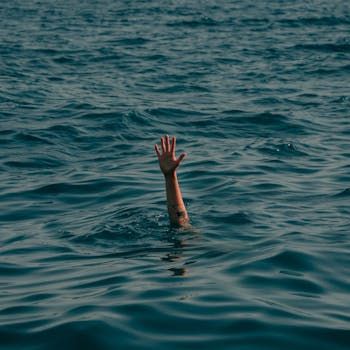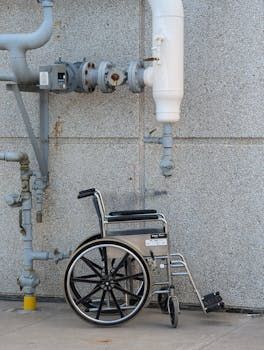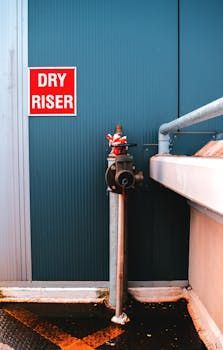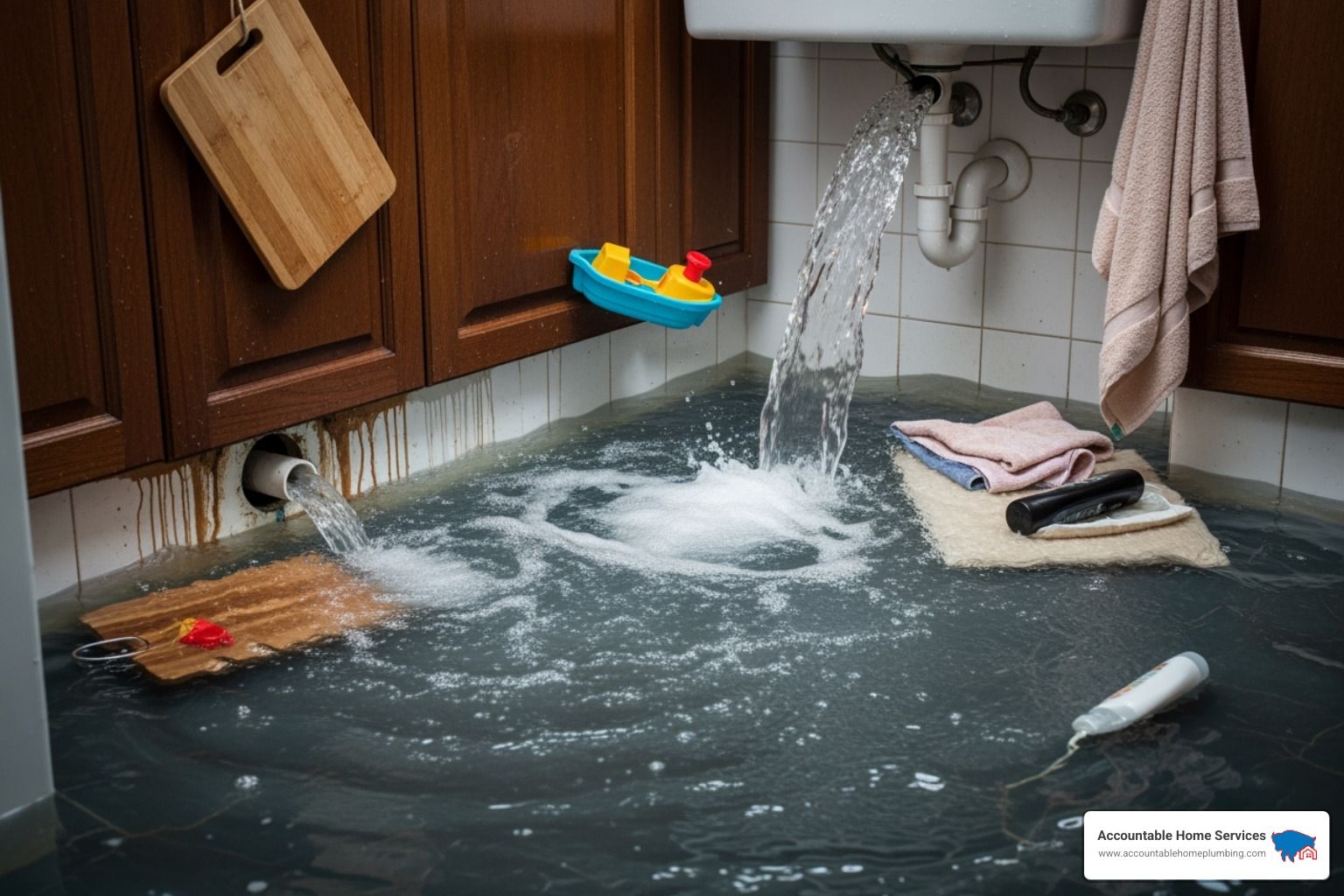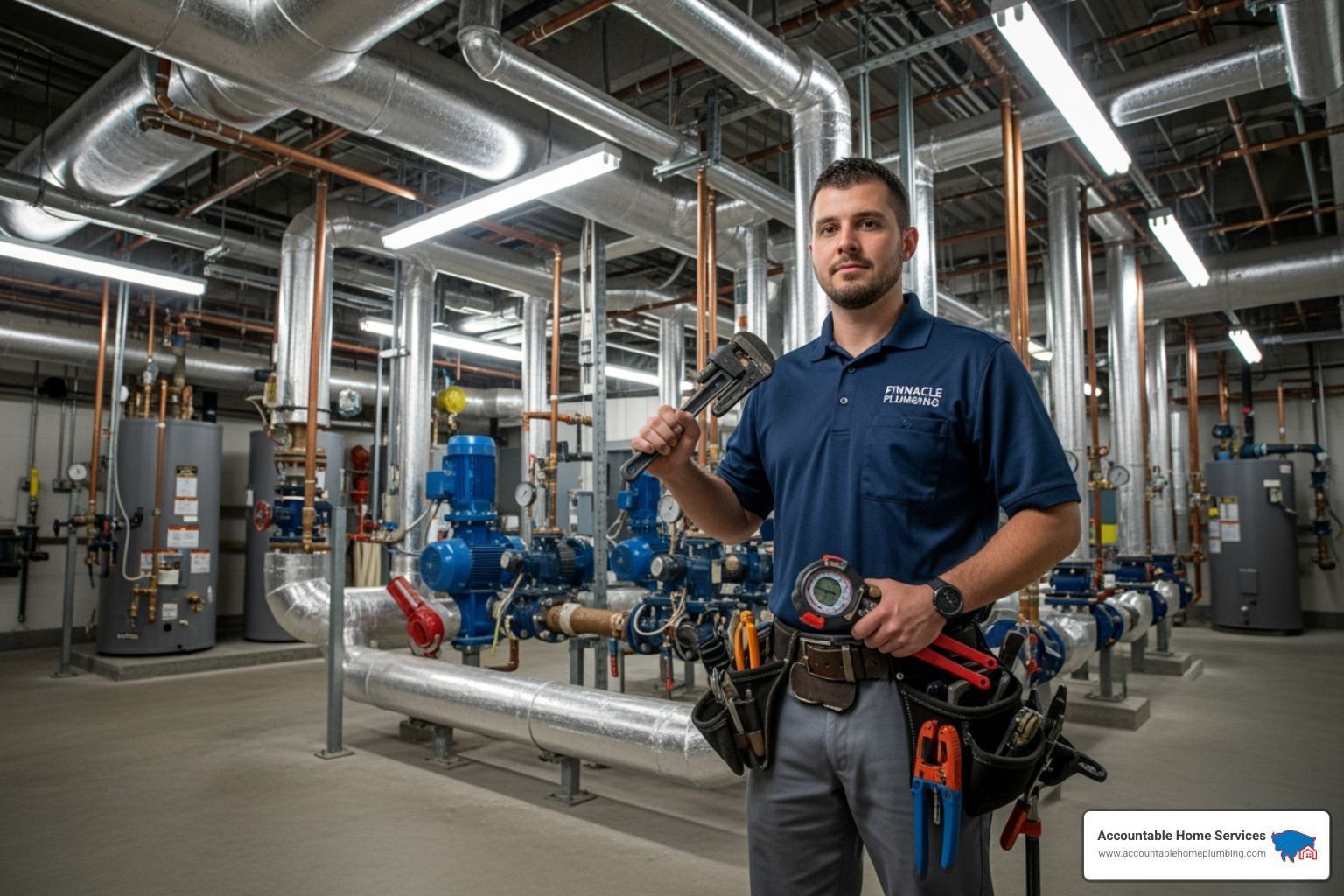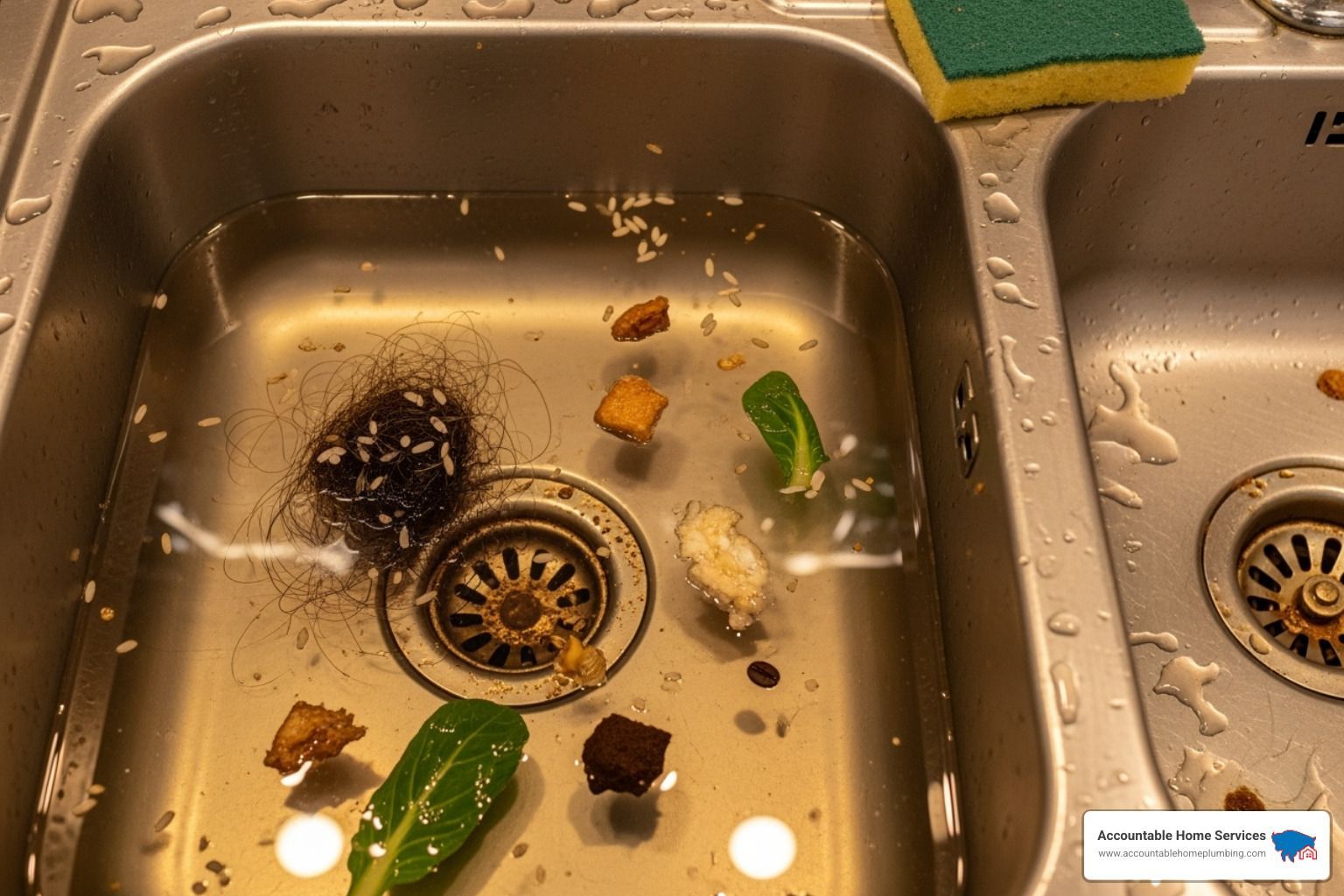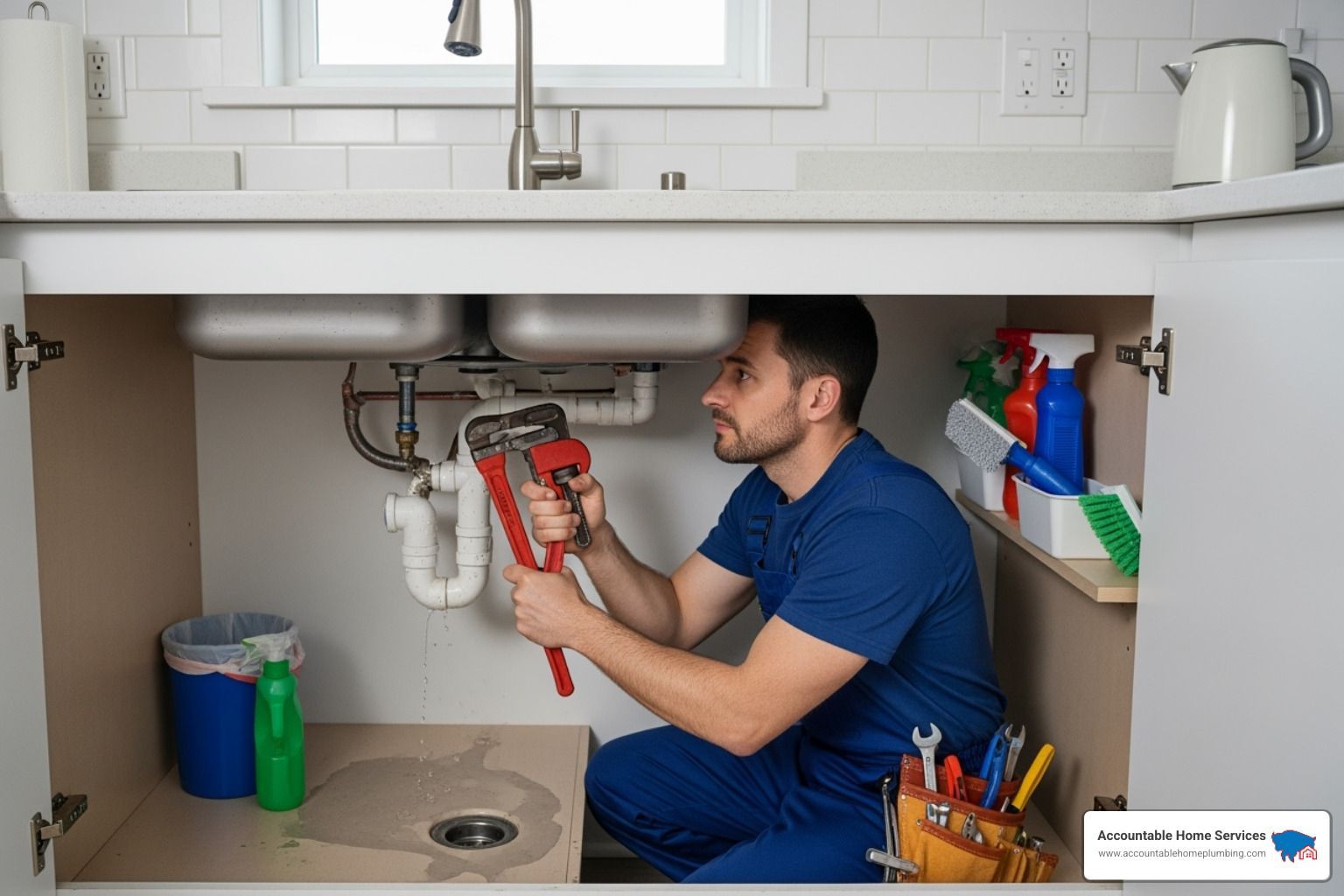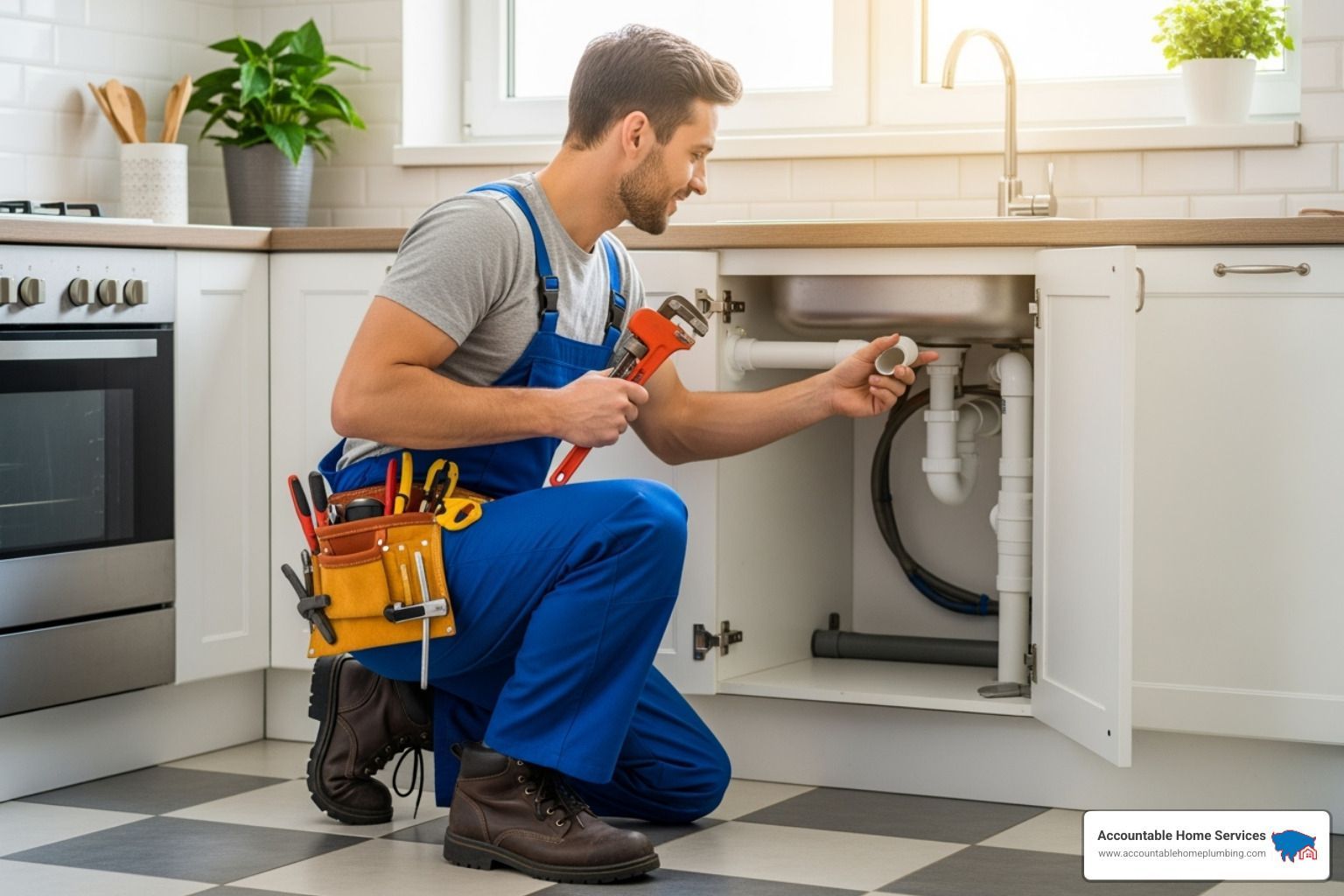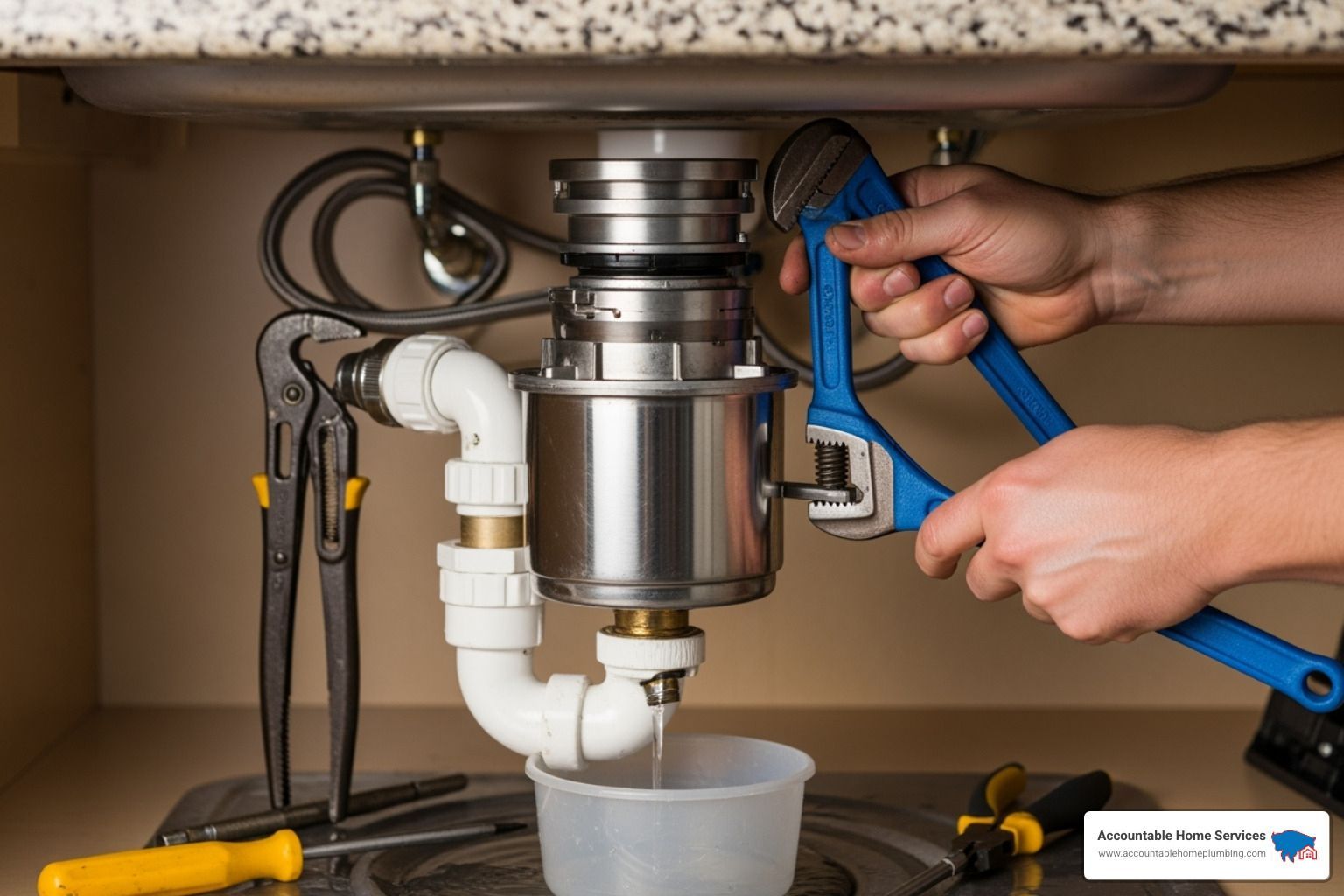Installation Made Easy: Residential Backflow Preventers
Residential backflow preventer installation is essential for homeowners concerned about water safety. Here's what you need to know:
- Prevents Contamination: A backflow preventer stops water from flowing backward, which could contaminate your clean water supply.
- Handles Pressure Changes: These devices are crucial when pressure changes in your pipes could cause backflow.
- Installation Tip: Install above ground in an outdoor enclosure to ensure safety and easy access.
Imagine this: a sudden change in water pressure causes the water in your home to flow in the wrong direction. Without a proper backflow preventer, contaminated water could seep back into the main supply. This isn't just a hypothetical situation; it’s a real risk that could pose significant health dangers. Particularly in the Denver Metro area, with its mix of residential plumbing systems, ensuring the installation of a backflow preventer is a proactive step in protecting your water quality.
Homeowners often face plumbing issues, but contamination through backflow is one risk easily mitigated by proper installation. As water should always flow into your home, backflow preventers act as gatekeepers, safeguarding against potential safety hazards stemming from pressure changes in your water pipes.
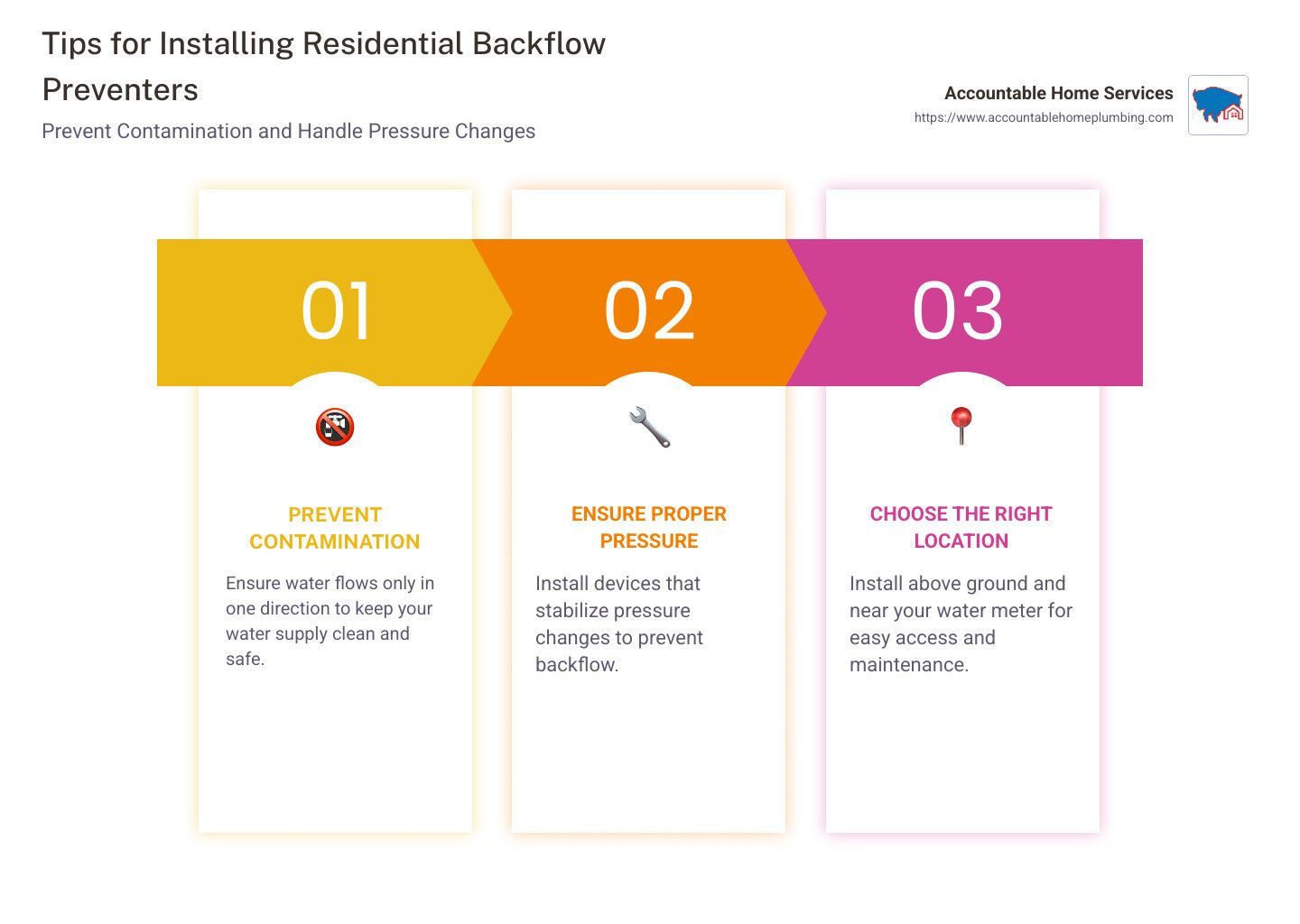
Understanding Backflow Preventers
Backflow preventers are crucial devices in any residential plumbing system. They ensure water flows in one direction only, protecting your drinking water from contamination. Let's break down how they work and why they are essential.
One-Direction Flow
The primary function of a backflow preventer is to maintain a one-directional flow of water. This means water should only move from the main supply into your home, not the other way around. When water reverses direction due to pressure changes, it can carry contaminants back into the clean water supply. A backflow preventer stops this from happening, acting as a barrier between potential contaminants and your drinking water.
Drinking Water Protection
Contaminated water poses serious health risks. Imagine if water from a swimming pool, lawn irrigation system, or even a septic tank found its way back into your drinking water. Backflow preventers are designed to stop this by creating a physical barrier that keeps your drinking water safe. These devices are especially important in areas with frequent pressure changes, as they prevent any accidental mixing of clean and dirty water.
Cross Connections
A cross connection occurs when a potable water supply is linked to a non-potable source. This can happen in various situations, such as when garden hoses are left submerged in a pool or when sprinkler systems are improperly installed. Backflow preventers are essential in preventing contamination from these cross connections. By stopping reverse flow, they ensure that only clean water enters your home.
Understanding the importance of backflow preventers is the first step in ensuring your home's water safety. These devices are not just helpful; they are essential in maintaining the integrity of your water supply. In the next section, we will explore how to choose the right location for installing these crucial devices in your home.
Residential Backflow Preventer Installation
Choosing the Right Location
When it comes to residential backflow preventer installation, choosing the right location is key to ensuring both effectiveness and safety. The best practice is to install the device in an above-ground enclosure. This setup is not only cost-effective but also improves safety by providing easy access for maintenance and inspection.
Why Above-Ground?
Installing your backflow preventer above ground offers several benefits:
- Easy Access for Maintenance: An above-ground installation allows for straightforward inspection and maintenance, making it easier to ensure the device is functioning correctly.
- Safety and Flood Risk: By keeping the preventer above ground, you reduce the risk of contamination from flooding. Underground installations can flood, leading to potential cross connections and contamination risks.
- Cost-Effectiveness: Above-ground installations are generally more affordable in the long run, as they prevent expensive repairs and replacements caused by flooding or difficult access.
Water Meter Proximity
It's also crucial to place the backflow preventer near the water meter. This location minimizes the length of pipe that could potentially be exposed to backflow, thus offering more robust protection for your water supply.
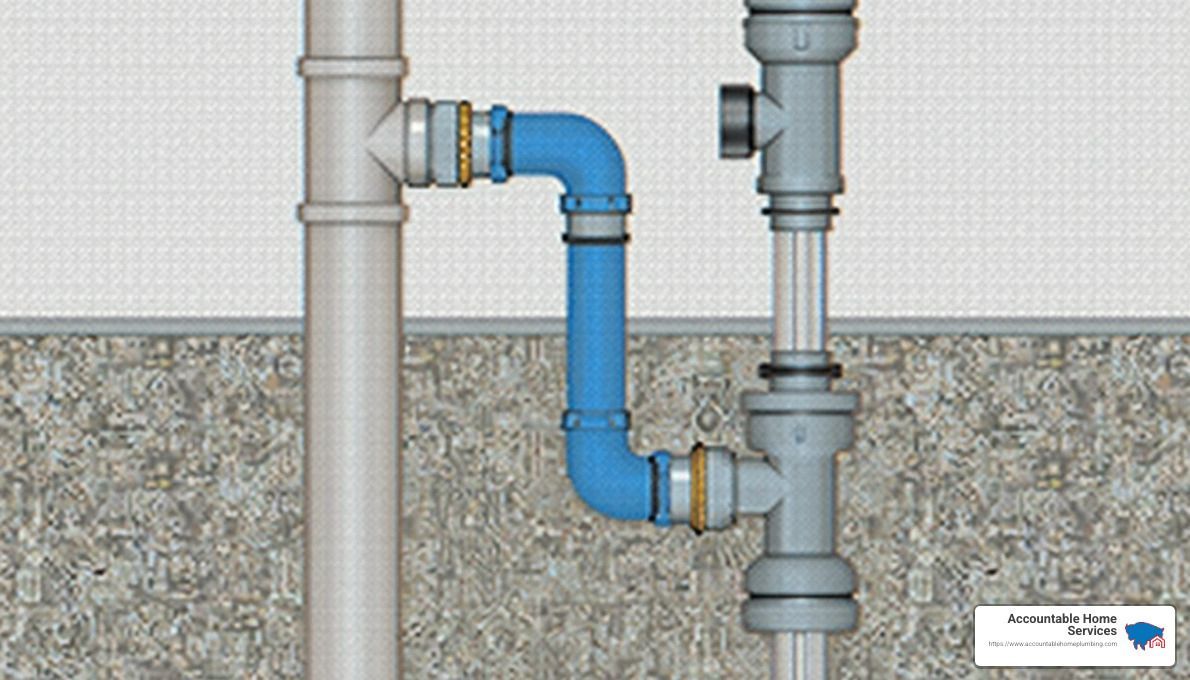
Installation Process
The installation of a backflow preventer should always be handled by a qualified plumber. This ensures the device is installed correctly and in compliance with local regulations. Here's a simple breakdown of the installation process:
- Permits and Regulations: Before installation, check with your local building authority to understand any permits or regulations required. Compliance with city and state codes is essential to avoid legal issues and ensure safety.
- Choosing the Right Device: Different homes might require different types of backflow preventers. A professional plumber can recommend the best type for your specific needs.
- Installation: The plumber will install the device, usually near the main water line close to the water meter, in an above-ground enclosure.
- Inspection: After installation, a thorough inspection ensures everything is functioning correctly. Regular inspections are critical to maintain the device's effectiveness.
Hiring a Professional
Hiring a qualified plumber is not just about following regulations. It's about ensuring the safety and reliability of your water supply. A professional will have the expertise to steer permits, choose the right device, and perform a safe installation.
In the next section, we will explore the different types of backflow prevention devices and how to choose the right one for your home.
Types of Backflow Prevention Devices
When it comes to protecting your home's water supply, understanding the different types of backflow prevention devices is key. Let's explore some of the most common options available for residential use.
Double Check Valve Assembly (DCVA)
The Double Check Valve Assembly, or DCVA, is a popular choice for many homeowners. This device consists of two check valves installed in series. It is designed to prevent backflow by allowing water to flow in only one direction. The DCVA is commonly used in residential settings because it provides a reliable barrier against backpressure and backsiphonage.
Main Drain Pipe Installation
For optimal performance, the DCVA is often installed directly on the main drain pipe. This strategic placement ensures that the device can effectively prevent contaminated water from entering your home's water supply.
Reduced Pressure Zone (RPZ) Assemblies
RPZ Assemblies are another effective option for preventing backflow. These devices are particularly well-suited for situations where there is a higher risk of contamination. An RPZ assembly includes two check valves and a relief valve, which provides an additional layer of protection.
Flood Risk and Relief Valve
One important feature of the RPZ assembly is its relief valve. This valve is designed to open and discharge water if the pressure in the system drops unexpectedly. While this is a critical safety feature, install RPZ assemblies in areas where any discharged water won't cause damage. Flood risk is a consideration, so placing these assemblies above ground in a proper enclosure is recommended.
Check Valves, Gate Valves, and Dual Backflow Valves
In addition to DCVAs and RPZ assemblies, there are other types of valves used in backflow prevention:
- Check Valves: These valves allow water to flow in only one direction, providing basic protection against backflow.
- Gate Valves: These are typically used to control water flow in a system and can be part of a backflow prevention setup.
- Dual Backflow Valves: These combine features of both check and gate valves, offering improved protection by blocking reverse flow in two different ways.
Choosing the Right Device
Selecting the right backflow prevention device for your home depends on several factors, including the level of risk and the specific requirements of your water system. Consulting with a professional plumber can help you make an informed decision.
In the next section, we'll answer some frequently asked questions about residential backflow preventer installation to help you better understand the process and what to expect.
Frequently Asked Questions about Residential Backflow Preventer Installation
Where should a backflow preventer be installed in a house?
The ideal location for a backflow preventer is above-ground in an outdoor enclosure. This setup not only provides easy access for maintenance but also ensures safety by avoiding potential flooding inside your home. Placing the preventer near the water meter is common, as it allows for efficient monitoring and maintenance. Avoid underground installations due to risks like flooding and exposure to toxic gases.
What is the average cost of installing a backflow preventer?
The cost of installing a backflow preventer can vary, but on average, it ranges from $150 to $450. The national average cost is approximately $350. This price can fluctuate based on factors such as the type of preventer, the complexity of the installation, and local labor rates. Always consider obtaining multiple quotes to ensure you're getting a fair price.
Can I install my own backflow preventer?
While it might be tempting to try a DIY approach, installing a backflow preventer is best left to a qualified plumber. This is because the installation must comply with city and state regulations, which often require specific permits. Hiring a licensed contractor ensures that the installation meets all legal requirements and functions correctly, providing peace of mind and protecting your water supply.
Conclusion
At Accountable Home Services, we pride ourselves on delivering reliable and transparent plumbing solutions to the Denver Metro area. Whether you’re dealing with an emergency plumbing issue or planning a residential backflow preventer installation, our team is ready to assist you with expertise and care.
Our commitment to transparent pricing means you’ll always know what to expect. We provide detailed estimates with no hidden fees, ensuring you receive top-notch service at a fair price. This approach builds trust and confidence, allowing you to focus on what matters most—keeping your home safe and functional.
By choosing Accountable Home Services, you’re opting for a partner dedicated to excellence. Our skilled plumbers are available 24/7, ready to tackle any plumbing challenge with professionalism and efficiency. From Broomfield to Boulder, and everywhere in between, we’re here to ensure your plumbing needs are met with the highest standards.
For more information about our services or to schedule a consultation, visit our services page. Let us help you keep your home’s plumbing in perfect working order.

